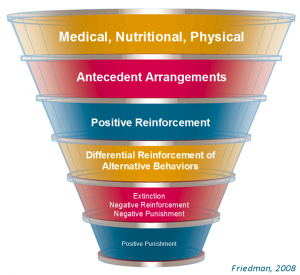Just recently I closed a blog post with the following statement:
“Finally, choosing the right bird for the job or even the right job for the bird is probably the most important training decision we make.”
This statement triggered quite an active discussion on one Yahoo group and it was interesting to read the thread.
I also received one question directly about this:
“I would be interested to know more about how you know what bird is right for the job or what job is right for the bird and why?” – Curtis White.
I must admit that the statement was placed into the blog entry to see what reaction it would get, to stimulate discussion. This is why I have not posted any responses to the Yahoo group where it was being discussed, I wanted to observe the readers and gauge if they were able to apply the information that had preceded the statement. It was encouraging that the obvious answer was among the points of view expressed.
That obvious answer is that just like every other training issue we face our decision should be driven by two factors. Firstly the bird’s performance, evaluated using direct observation of the behavior being trained. How is the bird responding to the training sessions in changing environments? Is its focus on the training sessions improving as we work the bird? Combined with this we come back once again to the personal ethical position of the trainer. As I have stated previously motivation can certainly be raised by using deprivation (reducing diet, to reduce weight, to increase motivation). However, there comes a time for me when I am just not comfortable with reducing weight to increase the focus of a bird that is simply not comfortable doing what is being asked of it. In addition, as one increases food drive other less desirable behaviors begin to be presented. For example with a human raised bird these may include gross begging behaviors or with some species aggressive responses to the trainer and others in the presence of food. Before I reach this point it is time to re-evaluate if this is the right bird for the job or ask if the bird is better suited to a different behavior, in this way we find the right job for the bird.
Making the personal judgment call, and that is for sure what it is, requires the same skills that I keep repeating every good trainer needs. These skills include good observation and a high degree of empathy for the animal being trained.
The question was raised in one discussion thread as to how you know whether the poor response of a bird is due to an unsuitable bird or to the lack of skill on the part of the trainer. I would say that every trainer must accept full responsibility for the behavior of their birds and therefore on some level it always the trainer failing the bird. This is why I believe that anyone training animals needs to really study the science and also, perhaps most importantly, keep an open mind. Ultimately, regardless of whether the bird is not suited to the job or the trainer lacks the skill to train the desired behavior it is the responsibility of the trainer to recognize this.
It is worth reiterating that trainers should always keep challenging their own skill level. I mentioned the self-reinforcing dependence of novice trainers on weight management previously; if one is really interested in becoming a good trainer one simply has to let go of this apparent “silver bullet”, this will challenge your training skills and lead to being a better trainer with more engaged birds.
I remember very well a workshop given by Steve Martin for professional trainers where he encouraged everyone to work all non-raptor species without equipment attached. It had been almost standard practice in professional show situations to use falconry style equipment on corvids like crows and ravens. The “take-away” message from Steve for me was that by taking off the equipment the trainer was forced to increase the level of their skills, to make a greater effort to understand the nature of the bird and its behavior, and that by doing so they would become a better trainer. This was a life-changing moment for me and one training journey using this approach is documented in my 2006 IAATE presentation “Strong Foundations and Adjustments – Keys to Training Success.”
Releasing oneself from dependence upon weight management I see in a similar potentially life changing way for novice trainers. Let go of your preconceptions, accept full responsibility for your birds’ behavior, make mistakes, learn from them, and grow as a trainer.
Sid.





